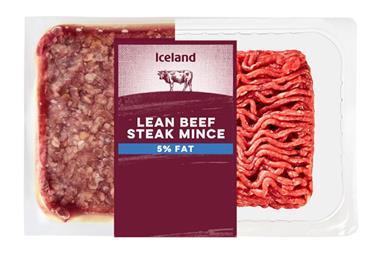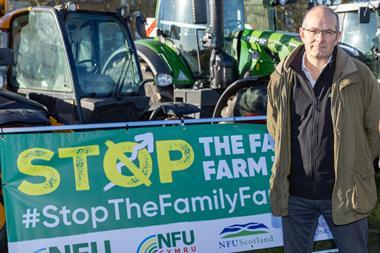A major shake-up in the beef supply chain throughout the EU over the next decade is expected to tip the balance more in favour of primary producers, according to industry analyst David Evans.
While not going the whole way towards the National Beef Association’s call for 250p per kg dw, he predicted a steady climb towards 215-220p as the EU-25 headed towards a deficit. Prices are currently at 195p.
Speaking at Beef Expo 2005 in Wales this week, Evans, who heads Beef Improvement Services, said that against a current EU market demand of around eight million tonnes a year, import barriers such as tariffs and levies would lead to shortages. “Over the next five to
seven years, with imports not expected to exceed 600,000 tonnes, domestic production would have to be maintained at current levels to meet anticipated demand,” he said.
“However, the expected drop in EU beef production does suggest that there may be a looming market imbalance.”
This would be driven by a continuing decline in the EU dairy herd, which provides about 60% of European beef, and suckler beef producers’ reactions to the ending of beef subsidies, leading to an overall production drop of more than one million tonnes.
With a global beef trade of five million tonnes, a 20% increase in EU demand would stretch most supply chains, he said.
In addition, animal health issues, politics and currency exchange rates would demand expensive hedging strategies.
“This would suggest that over the medium term, production could be in continued short supply while import barriers remain in effect.
“Beef price levels will play a major role in determining a level of production that maintains a balance between consumption and supply.”
Vic Robertson
While not going the whole way towards the National Beef Association’s call for 250p per kg dw, he predicted a steady climb towards 215-220p as the EU-25 headed towards a deficit. Prices are currently at 195p.
Speaking at Beef Expo 2005 in Wales this week, Evans, who heads Beef Improvement Services, said that against a current EU market demand of around eight million tonnes a year, import barriers such as tariffs and levies would lead to shortages. “Over the next five to
seven years, with imports not expected to exceed 600,000 tonnes, domestic production would have to be maintained at current levels to meet anticipated demand,” he said.
“However, the expected drop in EU beef production does suggest that there may be a looming market imbalance.”
This would be driven by a continuing decline in the EU dairy herd, which provides about 60% of European beef, and suckler beef producers’ reactions to the ending of beef subsidies, leading to an overall production drop of more than one million tonnes.
With a global beef trade of five million tonnes, a 20% increase in EU demand would stretch most supply chains, he said.
In addition, animal health issues, politics and currency exchange rates would demand expensive hedging strategies.
“This would suggest that over the medium term, production could be in continued short supply while import barriers remain in effect.
“Beef price levels will play a major role in determining a level of production that maintains a balance between consumption and supply.”
Vic Robertson
















No comments yet